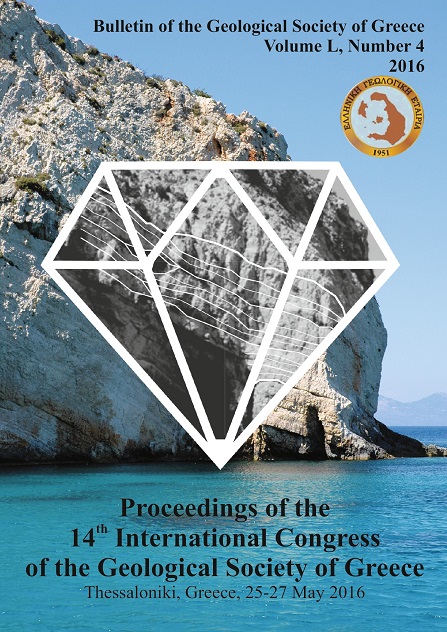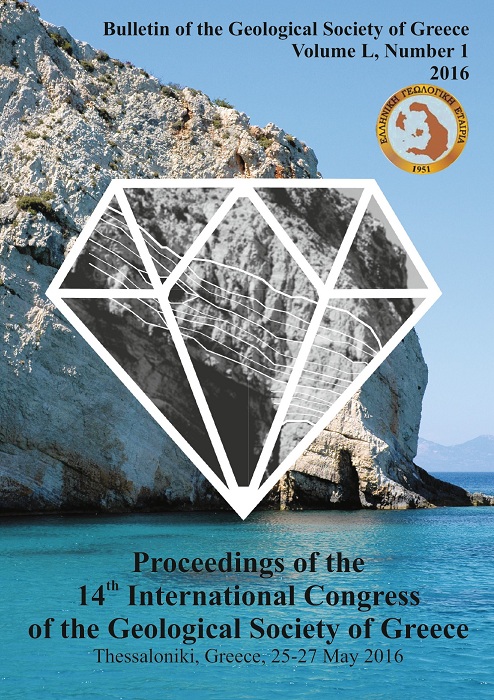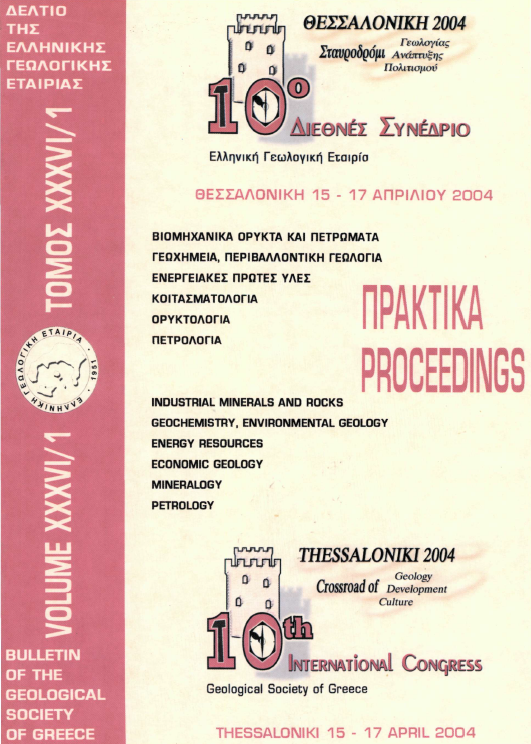MINERAL CHEMISTRY AND FORMATION OF AWARUITE AND HEAZLEWOODITE IN THE XEROLIVADO CHROME MINE, VOURINOS, GREECE
Résumé
The Serpentinite between the chromite bodies 4 and 5 of Xerolivado mine (Vourinos, Greece), contains sparsely very small grains (<20μm) of awaruite (Fe0.91Cu0.06Co0.03Ni3), heazlewoodite (Ni2.91Fe0.06S2), magnetite and Co pentlandite (Ni3.79Fe2.98Co2.38S8). The olivine contains 0.40 wt% NiO and 6.91 wt% FeO, while the serpentine 0.18 wt% NiO and 3.02 wt% FeO. The Co-content of awaruite is 1.31 wt% and that of heazlewoodite 0.12 wt%. Heazlewoodite is a product of the primary Co-pentlandite reduction, resulting from the serpentinization of the ultramafic rock. The Ni content of awaruite is derived both from olivine and from Co-pentlandite. The reducing environment resulting from serpentinization and the low sulphur fugacity, favour the formation of awaruite, heazlewoodite and magnetite.
Article Details
- Comment citer
-
Tzamos, E., Filippidis, A., Michailidis, K., Koroneos, A., Rassios, A., Grieco, G., Pedrotti, M., & Stamoulis, K. (2016). MINERAL CHEMISTRY AND FORMATION OF AWARUITE AND HEAZLEWOODITE IN THE XEROLIVADO CHROME MINE, VOURINOS, GREECE. Bulletin of the Geological Society of Greece, 50(4), 2047–2056. https://doi.org/10.12681/bgsg.11951
- Rubrique
- Petrology and Mineralogy

Ce travail est disponible sous licence Creative Commons Attribution - Pas d’Utilisation Commerciale 4.0 International.
Authors who publish with this journal agree to the following terms:
Authors retain copyright and grant the journal right of first publication with the work simultaneously licensed under a Creative Commons Attribution Non-Commercial License that allows others to share the work with an acknowledgement of the work's authorship and initial publication in this journal.
Authors are able to enter into separate, additional contractual arrangements for the non-exclusive distribution of the journal's published version of the work (e.g. post it to an institutional repository or publish it in a book), with an acknowledgement of its initial publication in this journal. Authors are permitted and encouraged to post their work online (preferably in institutional repositories or on their website) prior to and during the submission process, as it can lead to productive exchanges, as well as earlier and greater citation of published work.






